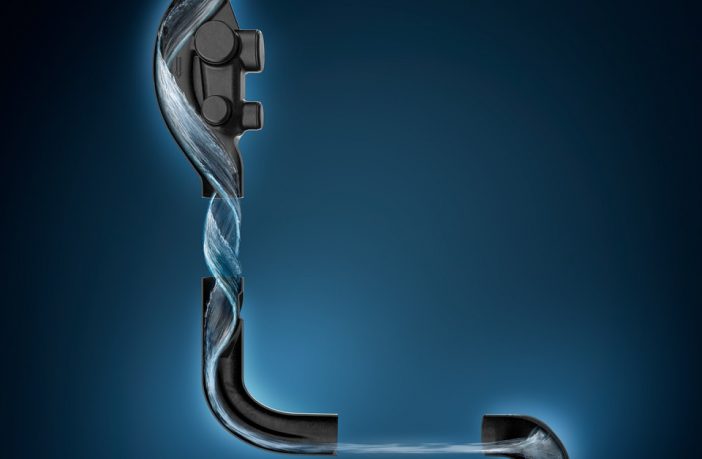- Sanitary engineers can now implement drainage systems without ventilation pipes.
- This is made possible thanks to the new Geberit SuperTube technology, which is based on the Geberit Sovent fitting and two flow-optimised bends.
- Geberit SuperTube will be available in South Africa from April 2019.
In high-rise buildings, the ventilation pipes in the drainage systems take up a great deal of space. With the new Geberit SuperTube technology, it is now possible to dispense with the ventilation pipes entirely. This is in addition to the possibility of smaller pipe diameters, with the discharge capacity still reaching almost the same levels as those seen in conventional systems.
The SuperTube now also makes it possible to install horizontal pipes with a length of up to six metres without a slope.
A continuous column of air is key when it comes to achieving added space and reduced complexity when planning drainage systems in high-rise buildings. This is made possible thanks to the new Geberit SuperTube technology, which is based on the Geberit Sovent fitting and two flow-optimised bends. Thanks to the Geberit PE Sovent fitting and the two new bends, a continuous column of air is created, rendering additional ventilation pipes unnecessary.
“The Geberit PE Sovent fitting causes the waste water to rotate and, in doing so, generates a continuous column of air. This increases the discharge capacity while at the same time having relatively small pipe dimensions,” comments Mathias Riggenbach, a Senior Product manager from Geberit. “Normally when there is a change in direction, this column of air collapses and ventilation pipes are necessary. With our two new bends – the Geberit PE BottomTurn bend and the Geberit PE BackFlip bend – we have now rectified this problem. Both new bends ensure that the column of air is maintained even when there is a change in direction and that ventilation pipes can be dispensed with.”
The two bends ensure that the column of air is now maintained even when there is a change in direction, thus guaranteeing proper ventilation as before. The integrated flow divider in the Geberit PE BottomTurn bend ensures that the annular flow in the stack is converted into a layered flow before the change in direction. The air column thus also remains stable in the horizontal line system. At the end of the horizontal pipe, the Geberit PE BackFlip bend with its special design gives the waste water a swirl, thus guiding it back into an annular flow once again without disrupting the air column.
“Wherever building owners, architects and sanitary engineers seek to achieve the maximum possible living space, the planning of the drainage system becomes particularly interesting,” comments Mathias. “With Geberit SuperTube technology, space savings can be made and the complexity reduced, as it is no longer necessary to plan or install parallel ventilation pipes.”
The combination of PE Sovent and the new bends with SuperTube technology allows sanitary engineers to build pipe ducts with significantly smaller dimensions. With SuperTube, narrower pipe diameters are also possible, and the ducts can be reduced in size through the absence of the ventilation pipes. This now also applies to the ceilings as well. Horizontal pipes with a length of up to six metres can now be installed continuously without a slope when connecting to the collector pipe.
This means that the ceiling suspension can be attached very close to the concrete ceiling, with the system achieving a high discharge rate of up to 12 litres per second. A further advantage for sanitary engineers is the reduced complexity when planning a continuous pipeline.
With Geberit SuperTube technology, sanitary engineers can implement drainage systems without ventilation pipes in future. Plumbers also benefit here – thanks to the omission of the ventilation pipe and the use of smaller pipe dimensions, they require less pipe material and make speedier progress on the building site.
Geberit SuperTube will be available in South Africa from April 2019.
Author: Bryan Groenendaal











